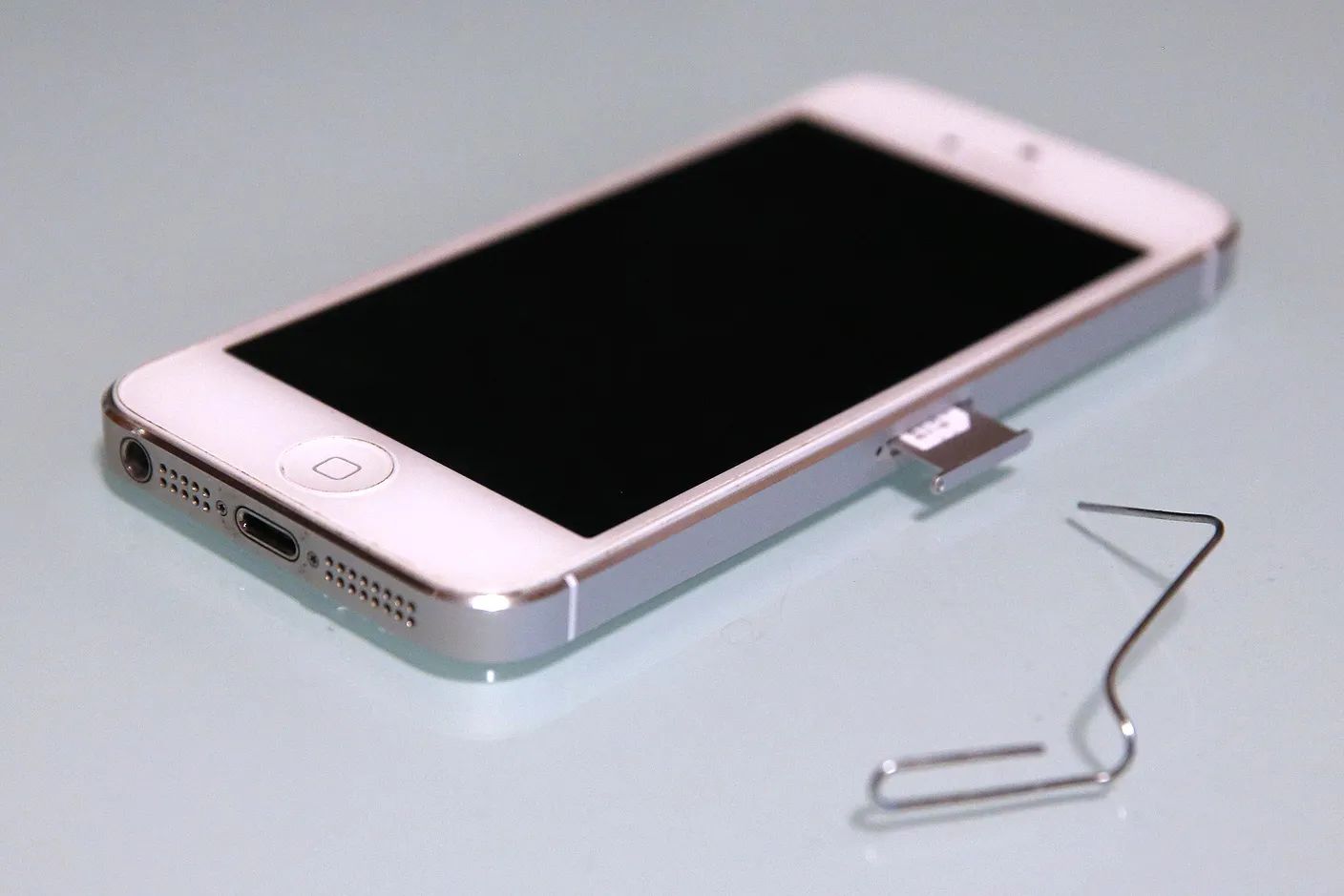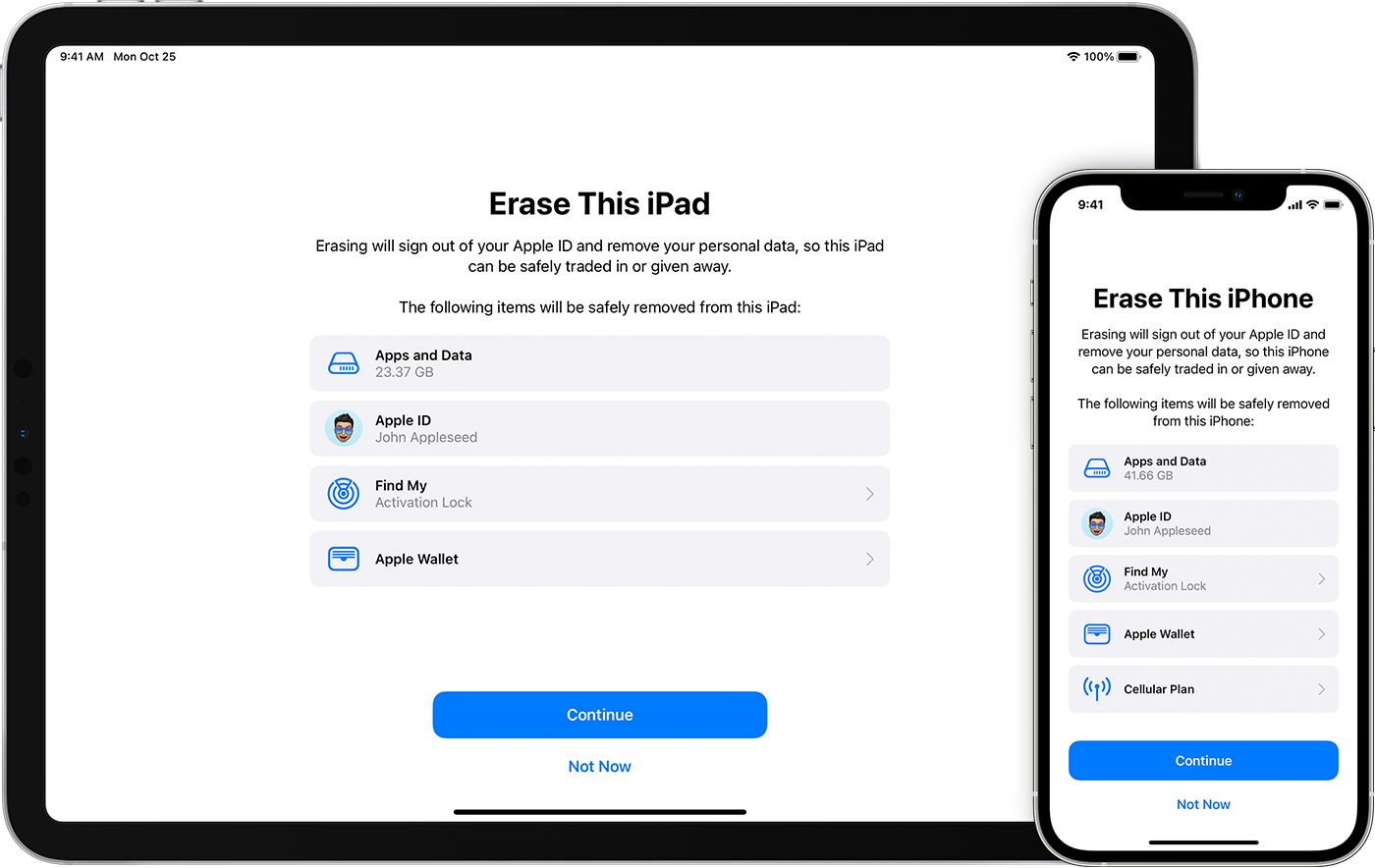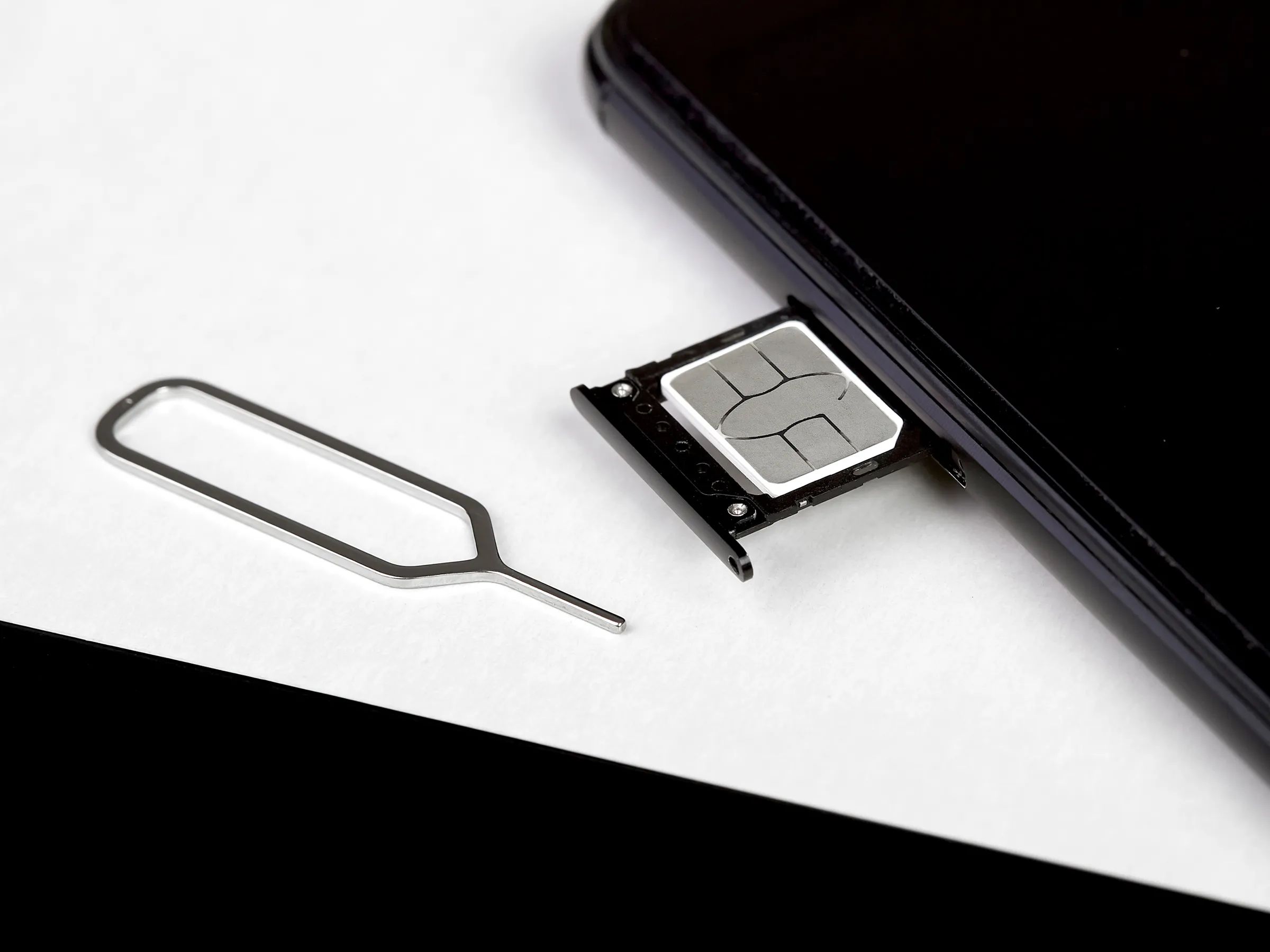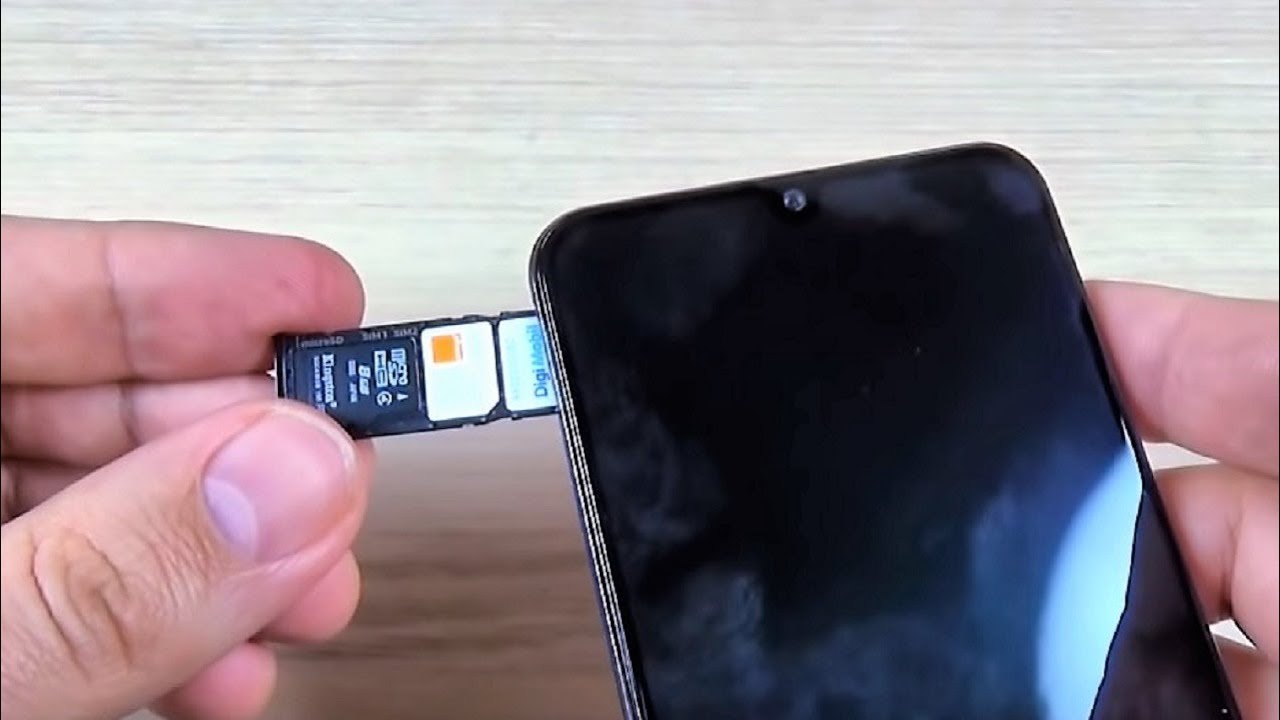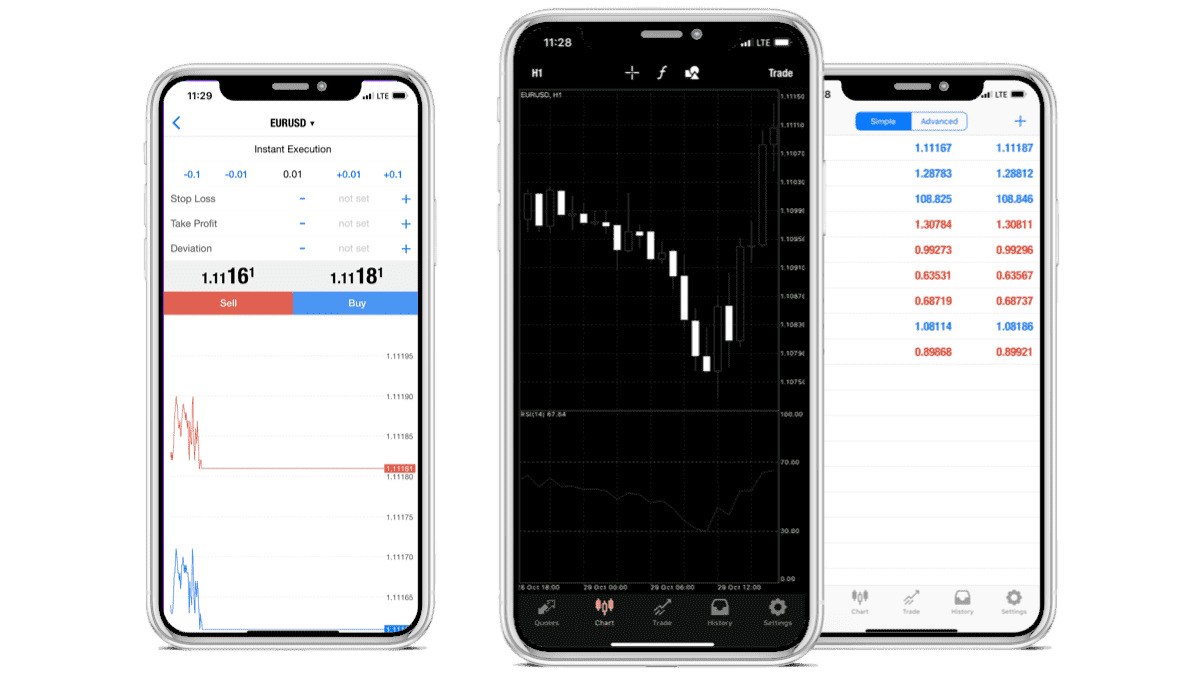Check the Manufacturer Trade-In Program
When considering trading in your phone, one of the first things you should do is to check if the phone’s manufacturer offers a trade-in program. Many major smartphone manufacturers, such as Apple and Samsung, have their own trade-in programs that allow you to trade in your old device for a credit towards the purchase of a new one.
These manufacturer trade-in programs are often a convenient option, as you can simply visit their website or go to a physical store to get an estimate of the trade-in value for your phone. They usually have a straightforward process and provide a reliable and hassle-free way to trade in your device.
One of the advantages of utilizing the manufacturer’s trade-in program is that you can be confident in the legitimacy and reliability of the transaction. Since you are dealing directly with the manufacturer, you can trust that they will handle the trade-in process professionally and efficiently.
Additionally, the trade-in value offered by the manufacturer can often be competitive compared to other trade-in options. They may even offer special promotions or deals that you won’t find elsewhere.
However, it’s important to research and compare the trade-in value offered by the manufacturer with other options before making a decision. While manufacturer trade-in programs can be convenient, they may not always offer the highest value for your phone.
Furthermore, consider the specific requirements and conditions of the manufacturer’s trade-in program. They may have limitations on the type of devices accepted, the condition of the phone, or the expiration date of the trade-in offer. Make sure to review these details before proceeding with the trade-in process.
In summary, checking the manufacturer trade-in program is a crucial step in preparing to trade in your phone. It provides a convenient and reliable option, but it’s important to shop around and compare trade-in values to ensure you’re getting the best deal for your device.
Research Third-Party Trade-In Options
In addition to the manufacturer’s trade-in program, another option to consider when trading in your phone is to research third-party trade-in options. These are independent companies or platforms that specialize in buying used devices.
There are several advantages to exploring third-party trade-in options. First, they often offer competitive trade-in prices compared to the manufacturer’s program. These companies rely on buying used devices to refurbish and resell, so they are motivated to offer fair prices to attract customers.
Furthermore, third-party trade-in options tend to accept a wider range of devices, including older models or devices from different manufacturers. This can be beneficial if you have a device that is not eligible for trade-in through the manufacturer’s program.
Another advantage is the convenience and accessibility of these third-party trade-in options. Many of these companies have online platforms where you can easily get an estimate of the trade-in value for your phone and initiate the trade-in process from the comfort of your own home.
When researching third-party trade-in options, it’s important to read reviews and check the credibility and trustworthiness of the company. Look for companies with a good reputation and positive customer feedback to ensure a smooth and reliable trade-in experience.
Additionally, pay attention to the terms and conditions of the trade-in offer. Some third-party trade-in options may have specific requirements regarding the condition of the phone, the presence of accessories, or the payment method. Make sure you understand and are comfortable with these terms before proceeding with the trade-in.
In summary, researching third-party trade-in options can provide you with alternative choices when trading in your phone. They often offer competitive prices, accept a wider range of devices, and provide convenient online platforms. However, be sure to assess the credibility of the company and review the terms and conditions before finalizing the trade-in.
Compare Trade-In Prices
When you’re planning to trade in your phone, it’s essential to compare trade-in prices offered by different platforms and companies. This step will help ensure that you get the best value for your device.
Start by checking trade-in prices on the manufacturer’s website or from their authorized retailers. They often provide trade-in estimators that allow you to input information about your phone’s make, model, and condition to receive an approximate value. Take note of the estimate provided.
Next, explore third-party trade-in options and check their trade-in prices for the same make and model of your phone. Use reputable trade-in platforms or resellers that have good customer reviews and ratings. Consider not only the trade-in value but also any additional fees or charges that might affect the overall value you receive.
It’s also worth visiting various online marketplaces, such as eBay or Craigslist, to see how much similar used phones are being sold for. This will give you an idea of the market value of your device and help you determine a reasonable trade-in price.
While comparing trade-in prices, keep in mind that the condition and specifications of your phone will greatly influence its value. Pay attention to the criteria each platform uses to evaluate a phone’s condition, such as scratches, screen damages, battery health, and functionality. Be honest about your phone’s condition to get accurate trade-in estimates.
Take note of the highest trade-in prices offered and consider any additional benefits offered by different trade-in platforms. Some may offer bonuses, discounts on new device purchases, or free shipping labels, which can affect the overall value you receive.
Lastly, consider the trade-in process and how long it will take to receive payment. Some platforms may offer instant credit or payment upon receipt and inspection of the device, while others may have a longer processing period. Factor in your urgency and needs when choosing a trade-in option.
In summary, comparing trade-in prices from different platforms is crucial to ensure that you receive the best value for your phone. Consider the manufacturer’s trade-in program, third-party trade-in options, and online marketplaces. Take note of the highest trade-in prices, evaluate the condition criteria, and consider any additional benefits offered. By doing so, you can make an informed decision and maximize the value of your phone trade-in.
Understand the Trade-In Requirements
Before trading in your phone, it’s essential to understand the trade-in requirements set by the platform or company you plan to use. Each trade-in option may have specific criteria and conditions that you need to meet in order to qualify for the trade-in.
First and foremost, check if your phone model is eligible for trade-in. Some trade-in programs only accept certain models or manufacturers. Make sure your phone meets the eligibility requirements to avoid any disappointment.
Pay attention to the condition guidelines provided by the trade-in platform. Most trade-in options will assess the physical condition of your phone, such as scratches, cracks, or water damage. They may also consider the functionality of the device, including the screen, buttons, audio, and battery life. Ensure your phone complies with their condition requirements to receive the maximum trade-in value.
Some trade-in programs have specific restrictions on locked devices or those still under contract with a carrier. Make sure you understand whether your phone needs to be unlocked or if any obligations with your carrier need to be settled before initiating the trade-in process.
In addition, some trade-in platforms require that you include the original accessories that came with your phone, such as chargers, cables, or headphones. Others may deduct value from your trade-in offer if these accessories are missing. Gather all the original accessories to ensure a smooth trade-in transaction.
It’s also important to consider whether the trade-in option has any limitations on the age of the device or the expiration date of the trade-in offer. Some platforms may not accept phones that are too outdated or have trade-in offers with limited validity. Be mindful of these time-related factors to avoid missing out on trade-in opportunities.
Lastly, familiarize yourself with the trade-in process and the steps you need to follow. Some platforms require you to fill out online forms and provide detailed information about your phone, while others may request that you visit a physical store for the trade-in. Understanding the process will help you navigate through the trade-in smoothly.
In summary, it’s crucial to understand the trade-in requirements set by the platform or company you choose. Check phone eligibility, comply with condition guidelines, ensure the device is unlocked, gather original accessories, and consider any age or expiration limitations. Familiarize yourself with the trade-in process to ensure a successful trade-in experience.
Backup Your Phone Data
Before proceeding with trading in your phone, it is absolutely crucial to backup all of your important data. This step ensures that you retain access to your personal information and prevents any loss or inconvenience during the trade-in process.
Backing up your phone data can be done in several ways, depending on your device and preferences. One common method is to use cloud storage services, such as iCloud for iPhones or Google Drive for Android devices. These services allow you to backup photos, videos, contacts, messages, and other important data securely in the cloud.
Ensure that your chosen cloud storage service is set to automatically backup your data regularly or manually initiate a backup before trading in your phone. This will ensure that even if something unexpected happens during the trade-in process, you have a recent backup to rely on. It’s also a good idea to double-check the backup to ensure that all important data has been successfully backed up.
In addition to cloud storage, you can also backup your data by connecting your phone to a computer and using the device’s sync and backup functionality. This method allows you to create a local backup of your data on your computer. It’s recommended to use reputable backup software or the native backup feature provided by your phone’s operating system.
Remember to backup not only your personal files but also any app-specific data, such as game progress or notes, to ensure a seamless transition to a new device. Some apps offer their own backup options, so make sure to utilize those as well.
Backing up your phone data is not only important for the trade-in process but also beneficial for any future data loss situations. It provides peace of mind knowing that your important information is safely stored and can be easily restored on a new device.
Once you have confirmed that your data is backed up, double-check the backup to ensure its completeness. Take the time to review your backup and make sure that it includes all the essential data you want to keep.
By backing up your phone data, you can proceed with the trade-in process confidently, knowing that your important information is secure. Whether you choose cloud storage services or local backup methods, taking this precautionary step will help ensure a smooth transition to a new device.
Disable Find My iPhone or Android Device Manager
One important step before trading in your phone is to disable the Find My iPhone feature on iOS devices or Android Device Manager on Android devices. These security features are designed to protect your phone and personal data, but they can hinder the trade-in process if not properly disabled.
For iPhone users, the Find My iPhone feature is a built-in security measure that helps locate a lost or stolen device. It also prevents unauthorized access to your data by enabling Activation Lock. To disable Find My iPhone, go to the Settings app, tap your Apple ID at the top of the screen, then select “iCloud.” From there, toggle off the Find My iPhone option. You may be prompted to enter your Apple ID password for confirmation.
Android users can disable the Android Device Manager by going to the Settings app, selecting “Security,” and turning off the “Remotely locate this device” or “Find My Device” option. The exact steps and wording may vary depending on your Android version and device manufacturer.
Disabling these features is important because trade-in platforms or companies will want to ensure that the device being traded in is not tied to any active security measures. Failure to disable these features can result in complications or delays in the trade-in process.
After disabling Find My iPhone or Android Device Manager, it’s recommended to verify the deactivation. Check that the feature is indeed turned off by attempting to locate the device through the respective services. If successful, it means that the feature has been disabled correctly.
Remember to keep your Apple ID or Google account credentials secure even after disabling these features. This ensures that you retain control over your accounts and can sign in to any new device you may acquire.
Disabling Find My iPhone or Android Device Manager is an important step in preparing your phone for trade-in. It ensures a smooth transaction by allowing the new owner to set up and use the device without any issues related to previous security measures. Take the time to properly disable these features, verify deactivation, and keep your account credentials secure for a hassle-free trade-in experience.
Remove SIM Card and Memory Card
Before trading in your phone, it’s important to remove both the SIM card and any memory card that may be inserted in the device. These removable storage components contain personal data, and removing them ensures the protection of your information and prevents any potential privacy breaches.
To remove the SIM card, you will need a SIM card ejector tool or a small paperclip. Locate the SIM card tray on your phone, typically found on the side or top of the device. Insert the ejector tool or paperclip into the small hole on the tray and gently push until the tray pops out. Carefully remove the SIM card from the tray and keep it in a safe place.
If your phone has a memory card, it’s important to remove it as well. Memory cards are commonly used to store photos, videos, and other files. Look for the memory card slot, which is usually located next to or near the SIM card tray. Open the slot by using a small tool or your fingernail, and gently push the memory card until it pops out. Handle the memory card with care and store it securely.
Removing both the SIM card and memory card ensures that no personal information, contacts, or sensitive data is accessible to the next owner of the phone. Additionally, it prevents any potential confusion or issues with data transfer or storage during the trade-in process.
Once you have removed the SIM card and memory card, take a moment to inspect the phone’s internal storage and ensure that all personal files and data have been properly backed up or transferred to your new device. This way, you can be confident that no important information is left behind.
Remember to keep the SIM card and memory card in a safe place. If you don’t plan to use them in your new phone, consider securely disposing of them to prevent any potential misuse of your data.
By removing the SIM card and memory card from your phone, you take a proactive step in safeguarding your personal information and protecting your privacy. It ensures a clean and secure trade-in process, giving you peace of mind knowing that your data is in your hands.
Perform a Factory Reset
Performing a factory reset is a crucial step before trading in your phone. This process erases all the data and settings on the device, restoring it to its original factory state. By doing so, you ensure that your personal information is completely removed and prevent any potential privacy breaches.
Before proceeding with a factory reset, it’s important to backup all important data, such as photos, videos, contacts, and any other files you want to keep. Backup options can include using cloud storage services, connecting to a computer, or utilizing backup apps or software specific to your device.
Once you have backed up your data, you can proceed with the factory reset. The exact steps may vary depending on your device’s make and model, but generally, you can find the factory reset option in the Settings app under the “System” or “Reset” section.
Before initiating the factory reset, make sure your phone is fully charged or connected to a power source to avoid any interruptions during the process. Follow the on-screen prompts to confirm and initiate the reset. Note that the procedure may take a few minutes, and your phone may restart multiple times.
After the factory reset, your phone will be returned to its original factory settings. All data, accounts, and settings will be erased, giving it a clean slate for the next owner. It’s important to note that a factory reset wipes all data from the internal storage, but it doesn’t affect any data stored on external memory cards or SIM cards.
After the factory reset is complete, take a moment to set up your phone as if it were brand new. Skip the options to log in to your previous accounts or restore any backup files if you’re trading in the phone immediately. This ensures that the next owner can seamlessly set up and use the device without any remnants of your personal information.
Performing a factory reset is a crucial step to protect your privacy and ensure a smooth trade-in process. It guarantees that all personal data is completely erased from the device, leaving no trace of your information behind. By taking the time to perform this reset, you can confidently proceed with trading in your phone.
Clean Your Phone
Before trading in your phone, it’s important to give it a thorough cleaning to ensure it’s in the best possible condition for the trade-in process. A clean and well-maintained phone gives a positive impression to the buyer and may even help increase its value. Here are some steps to follow when cleaning your phone:
1. Start by turning off your phone. This prevents any accidental actions or damage during the cleaning process.
2. Use a soft, lint-free cloth or microfiber cloth to gently wipe the screen and body of the phone. Make sure the cloth is clean and free of any abrasive particles that could scratch the surface of your device.
3. For stubborn smudges or fingerprints on the screen, you can lightly dampen the cloth with a small amount of water or a screen-cleaning solution specifically designed for electronic devices. Avoid using harsh chemicals or abrasive cleaners, as they can damage the screen or other components.
4. Pay attention to the nooks and crevices of your phone, such as the headphone jack, charging port, and speaker grills. Use a soft brush or a clean, dry toothbrush to gently remove any dust or debris that may have collected there.
5. Clean the cameras and sensors on your phone with a lens cleaning cloth or a microfiber cloth. Be gentle to avoid scratching the lenses or damaging the camera modules.
6. If there are any stubborn stains or marks on the phone’s body, you can use a mild cleaning solution or isopropyl alcohol (70% or higher) on a cloth to lightly rub the affected areas. Be cautious when using liquids near buttons and ports to prevent any potential damage.
7. Take care not to get any liquid inside the phone, especially around the openings and ports. Moisture can cause damage to the internal components and compromise the functionality of your device.
8. Once you have finished cleaning, let your phone air dry completely before turning it back on or placing it in a protective case.
By cleaning your phone thoroughly, you present a well-maintained device during the trade-in process. This not only enhances the aesthetic appeal but also gives the impression that the phone has been cared for and is in good condition overall.
Remember, cleaning your phone is not only important for trade-ins, but regular maintenance can help prolong the lifespan and performance of your device. Make it a habit to clean your phone regularly to keep it looking and functioning its best.
Gather the Original Accessories
Before trading in your phone, it’s important to gather all the original accessories that came with the device. These accessories not only add value but also ensure a smooth trade-in process and enhance the overall buyer experience. Here are some key accessories to gather:
1. Charger and Cable: Locate the original charger and cable that came with your phone. This includes the power adapter and USB cable specific to your device. The original charger is often preferred by buyers as it is specifically designed for optimal charging performance and compatibility.
2. Earphones or Headphones: If your phone came with a pair of earphones or headphones, make sure to include them in the trade-in. These accessories can enhance the buyer’s experience and add value to your phone. Keep in mind that some trade-in options may deduct value if these accessories are missing.
3. Box and Manuals: If you still have the original box and user manuals for your phone, gather them as well. While not essential, having the box and manuals can provide a more complete package for the buyer and add to the overall perceived value of the device.
4. SIM Ejector Tool: Locate the SIM card ejector tool that was included with your phone. This small tool is used to remove the SIM card tray and is often specific to the device model. Including the original SIM ejector tool can be helpful for the buyer, especially if they need to install their own SIM card.
5. Other Accessories: If your phone came with any other original accessories, such as a stylus, screen protector, or warranty card, gather them as well. These additional accessories can contribute to the completeness of the package and may be valued by potential buyers.
Gathering the original accessories ensures that you have a complete trade-in package, increasing the desirability and value of your phone. It also helps create a positive experience for the buyer, as they receive a device with all the necessary accessories for immediate use.
Remember to inspect the accessories for any damage or wear and tear. While minor signs of use are generally acceptable, excessive damage or missing parts may affect the trade-in value. Take care to clean and organize the accessories before completing the trade-in process.
In summary, gathering the original accessories enhances the trade-in experience by providing a complete package for the buyer. Include the charger, cable, earphones or headphones, box, manuals, SIM ejector tool, and any other original accessories. By doing so, you increase the value and appeal of your phone, making it an attractive option for potential buyers.
Keep the Trade-In Agreement and Receipt
After completing the trade-in process for your phone, it’s crucial to keep both the trade-in agreement and receipt in a safe place. These documents serve as important proof of the transaction and provide you with necessary information in case of any issues or disputes that may arise in the future.
The trade-in agreement is a legal document that outlines the terms and conditions of the trade-in transaction. It typically includes details such as the make and model of the phone, the agreed-upon trade-in value, any additional credits or promotions, and any specific conditions or requirements.
Review the trade-in agreement carefully before signing it and ensure that all information is accurate and matches the agreed-upon terms. If there are any discrepancies or concerns, address them with the trade-in platform or company immediately to avoid any potential complications later on.
The receipt is another important document to keep. It serves as proof that you have completed the trade-in and received the agreed-upon value for your phone. The receipt should include details such as the date of the transaction, the amount received, and any additional information related to the trade-in process.
In case of any issues or disputes that arise after the trade-in, such as a discrepancy in the trade-in value or a disagreement regarding the condition of the phone, having the trade-in agreement and receipt will help resolve the matter more effectively. These documents serve as evidence of the agreed-upon terms and the completion of the trade-in.
Keep the trade-in agreement and receipt in a secure location, such as a folder or a digital storage space, and make sure you can easily access them if needed. If you have a digital copy, consider saving it in multiple locations, such as your computer, cloud storage, or email.
It’s also a good practice to retain these documents for a reasonable period of time, even after the trade-in process is completed. This way, you have a record of the transaction for future reference or potential warranty claims.
In summary, keeping the trade-in agreement and receipt is essential for documenting the trade-in transaction and providing proof of the agreed-upon terms. These documents serve as important evidence in case of any issues or disputes that may arise after the trade-in. Keep them in a safe place and retain them for future reference if needed.









